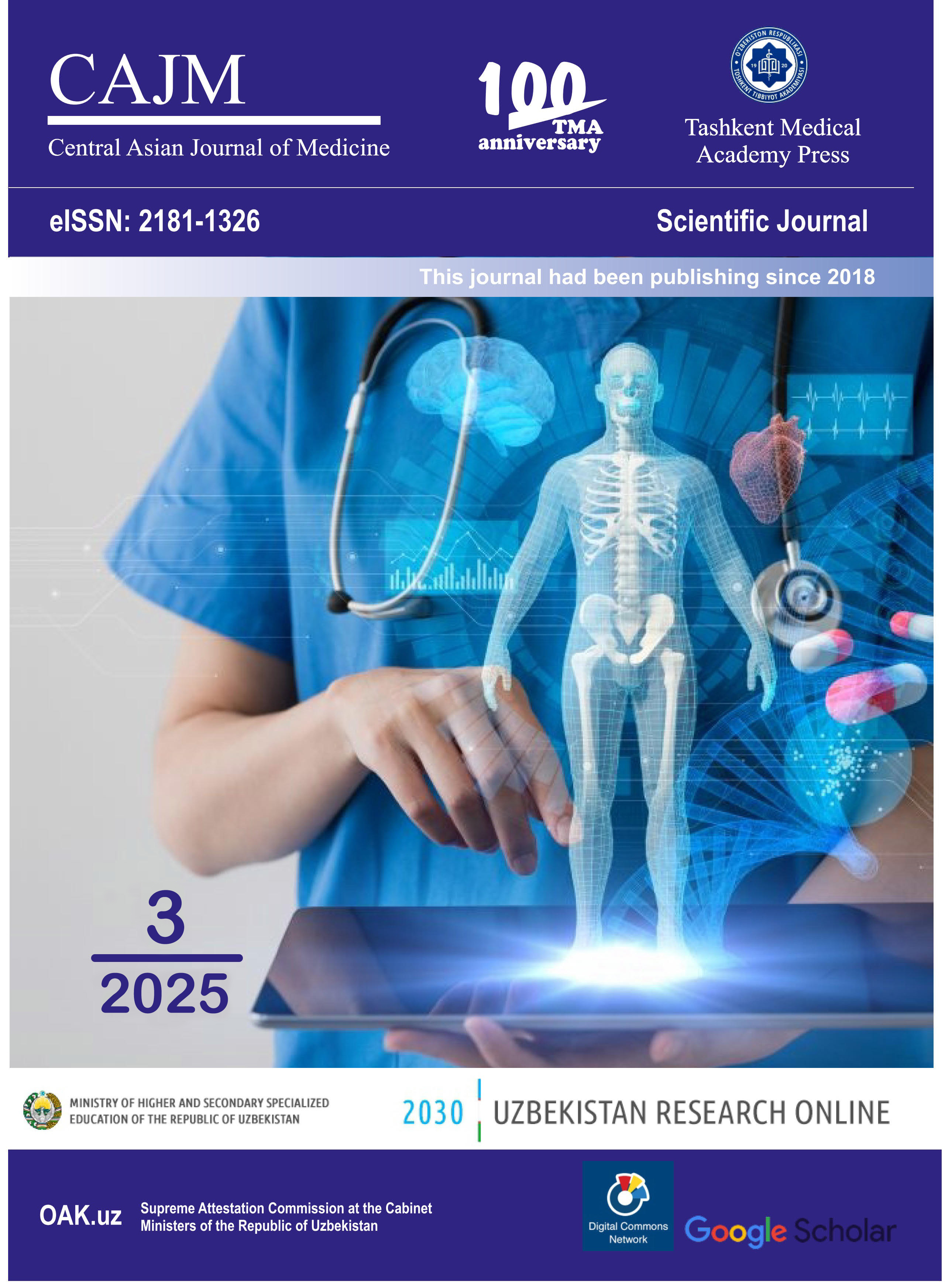MODERN APPROACHES TO THE TREATMENT OF TYPE 2 DIABETES MELLITUS WITH CHRONIC HEART FAILURE
Keywords:
SGLT-2 inhibitors, chronic heart failure, type 2 diabetes mellitus, ejection fraction, NT-proBNP.Abstract
Type 2 diabetes mellitus (DM2) and chronic heart failure (CHF) often occur together, exacerbating each other's course and worsening the patient's prognosis. The relationship between these diseases is determined by pathophysiological mechanisms, including insulin resistance, inflammation, and endothelial dysfunction.
Diabetes mellitus, a widespread socially significant disease with numerous micro- and macrovascular complications, acts both as a risk factor for heart failure and as a condition that significantly exacerbates its course.
The relationship between diabetes and CHF is complex and is caused by several mechanisms. Diabetes contributes to the development of cardiomyopathy, impaired diastolic function of the heart and the progression of coronary artery atherosclerosis, which eventually leads to the development or worsening of CHF [9].
References
A.V. Ivanov, et al. (2022). The economic burden of type 2 diabetes in the Russian Federation. Diabetology, 25(4), 67-78.
A. Y. Bagri, Tyurin, I. N., and others (2021). Type 2 diabetes mellitus and chronic heart failure in Russia: epidemiology and prognosis. Cardiology, 61(2), 105-117.
Brownlee M. “The pathobiology of diabetic complications: a unifying mechanism.” Diabetes. 2005;54(6):1615–1625.
Jia G, Hill MA, Sowers JR. “Diabetic cardiomyopathy: an update of mechanisms contributing to this clinical entity.” Circ Res. 2018;122(4):624–638.
Komajda M, et al. Impact of diabetes on outcomes in patients with heart failure and reduced ejection fraction: the PARADIGM-HF trial. Eur J Heart Fail. 2018;20(7):1001–1008.
Kosiborod, M., et al. (2020). Impact of Diabetes on Heart Failure Outcomes. JACC: Heart Failure, 8(5), 372-380.
Lopaschuk GD, Ussher JR. “Energy substrate metabolism in the failing heart.” Circ Res. 2016;119(5):807–821.
MacDonald MR, et al. Diabetes, left ventricular systolic dysfunction, and chronic heart failure. Eur Heart J. 2008;29(10):1224-1240.
McMurray, J. J. V., et al. (2019). Dapagliflozin in Patients with Heart Failure and Reduced Ejection Fraction. New England Journal of Medicine, 381(21), 1995-2008.
McMurray JJV, et al. ESC Guidelines for the diagnosis and treatment of acute and chronic heart failure. Eur Heart J. 2021;42(36):3599–3726.
McMurray JJV, et al. Dapagliflozin in patients with heart failure and reduced ejection fraction. N Engl J Med. 2019;381(21):1995–2008.
McMurray JJV et al. “Renin–angiotensin–aldosterone system inhibition in patients with type 2 diabetes and cardiovascular disease.” Lancet Diabetes Endocrinol. 2021;9(9):654–664.
Ning, H., et al. (2024). Prevalence and Outcomes of Heart Failure in Patients with Type 2 Diabetes: A Multicenter Study. Cardiovascular Diabetology, 23(1), 58.
Packer M, et al. Cardiovascular and renal outcomes with empagliflozin in heart failure. N Engl J Med. 2020;383(15):1413–1424.
Packer M. “Leptin–aldosterone–neprilysin axis: a potential mechanism underlying the adverse outcomes of obesity in patients with heart failure.” Circulation. 2018;137(15):1614–1631.
Schannwell CM, et al. “Left ventricular diastolic dysfunction as an early manifestation of diabetic cardiomyopathy.” Cardiology. 2002;98(1-2):33–39.
Zannad, F., et al. (2018). Heart Failure and Type 2 Diabetes: The REACH Registry. European Heart Journal, 39(6), 426-434.

